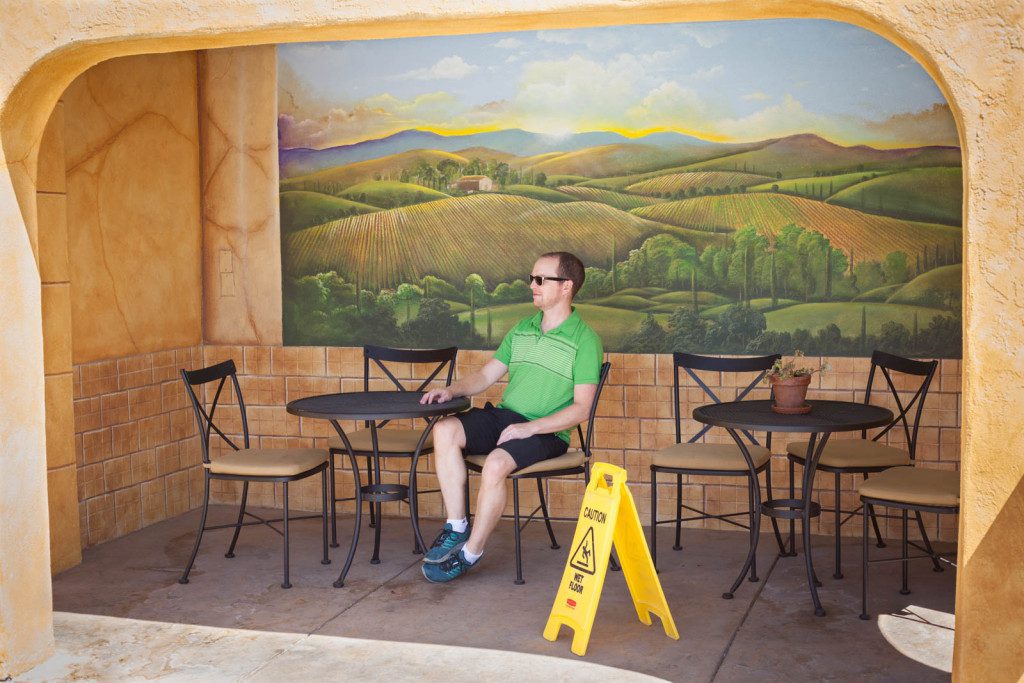Most wine writers seek the same thing: answers. Easy, clear, and tested resolutions to their theories. It’s why they drink so much: they believe that the more they consume, the closer they will get to understanding patterns and profiles in a wine.

I just can’t operate that way. For one, I can’t tolerate that much drink, even if I spit. But more importantly, I think wine by the bottle is so much more informative and compelling. Wine changes over time; that’s part of its mystery.
In fact, the more I drink certain wines, the less I know. Particularly with Pinot Noir. It’s as if each glass is merely a glimpse of a single moment in a single vineyard in a singular place. The variations from that moment, that vineyard, that place could be the result of dozens of factors.
Answers? No, I’m afraid excellent Pinot Noir only raises more questions.
Still, there is a thirst — just like all other wine writers — to get at least closer to knowledge. To see a place and forever form a bond with it when you come upon its wines.
With that in mind, my wife and I packed our bags and headed to Sonoma. Yes, there is Pinot Noir there, but also crisp and complex Chardonnay, as well as a heap of non-traditional wines (the “seven percenters” as one winemaker called them): grapes that are fringe but, in many cases, shouldn’t be.

I have been interested in a deep-dive on Sonoma’s wines for a while now, ever since we passed through in the rain en route to Anderson Valley for an all-too-short vacation in Boonville (funny enough, one of our first wine trips was to this valley in Mendocino County … the ultimate deep-dive into Pinot Noir, well before I knew any better).
In the northern section of Sonoma Valley, there is a nexus of geography around Healdsburg that has intrigued me ever since: three smaller valleys (Dry Creek, Alexander and Russian River) fan out in opposing directions, each offering their own fleet of unique wines because of their climate. Think of the Dry Creek Valley, and the power of Zinfandel comes to mind. Alexander Valley is more of an open book, fostering Cabernet Sauvignon, Merlot, Sauvignon Blanc and pretty much anything a winemaker wants to pursue.
Meanwhile, the Russian River Valley has burnished its reputation on Pinot Noir, offering up a wine that is opulent and as a result, has become a luxury brand all on its own. So much so, that I rarely buy it due to cost.
Further west of the area, things get very interesting. Along the first ridges in from the coast, winemakers are producing some of the most detailed expressions of Pinot Noir (and Chardonnay to a lesser extent) in the world. The catch-all for this area is the Sonoma Coast AVA, a vast landmass that is so large and varied, it tells you nothing about the wine. So, several winemakers have started to call the cooler terrain within sight of the ocean the “West Sonoma Coast” — which is hilarious. As if there is an Eastern Sonoma Coast?
But right in the heart of this area is a very clearly defined swath of land that has become its own appellation: Fort Ross-Seaview AVA. Here, above the fogline and far away from city lights, vineyards drape the dry and brittle hillsides that probably harbor more mountain lions and bobcats than people.

I wanted to see as much of it as I could. Plus, Sonoma has a few other things to make a vacation of it: excellent restaurants, farm-stands galore, bird-watching, hiking on the coast, and canoeing on the Russian River.
So over the next few weeks, I’ll be publishing a multi-part account of our trip through Sonoma’s famed Pinot Noir appellations, sampling from more bottles than I could possibly afford, and as always, taking thousands of pictures along the way.
I returned a complete and total expert on the subject matter.
Uhh … no, not really. More to come in the coming days.
Picture at top: Pinot Noir grapes near veraison at Fort Ross Vineyard along the Sonoma Coast. ©Kevin Day / Opening a Bottle
On a trip to explore the northern end of Sonoma — an area I thought produced the most interesting wines for my taste — we were unwittingly beginning our journey on the extreme southern fringes, in Carneros. Read more.
It’s a refrain you hear a lot from winemakers: great wine is made in the vineyard, not in the winery. But behind Ben’s comment was a subtle suggestion that while trends come and go, what he and his family were doing with Arista’s wines will endure. After all, he was just working with what nature was dealing him — and nature knows a thing or two about being timeless. Read more.
I wanted to visit Red Car. A month before, their Sonoma Coast Chardonnay blew me away. For me, it was a rare thing: a Chardonnay without noise. There was a purity in the fruit, and a restraint on the oakiness that really allowed for some compelling secondary aromas. Read more.
Wells Guthrie’s Copain Wines had been popping up in front of me at wine shops, wine lists, wine events and wine articles for years. The word was always positive: “This guy gets it,” one wine shop owner had told me. “He has an Old World style with New World terroir … his wines are very food-friendly.” Read more.
Compelling Pinot Noir in the Americas tends to come from the fringes: vineyards situated where the climate gives just barely enough sunlight and warmth to sustain, foster and ripen the berries into something beautiful. Read more.




7 Comments